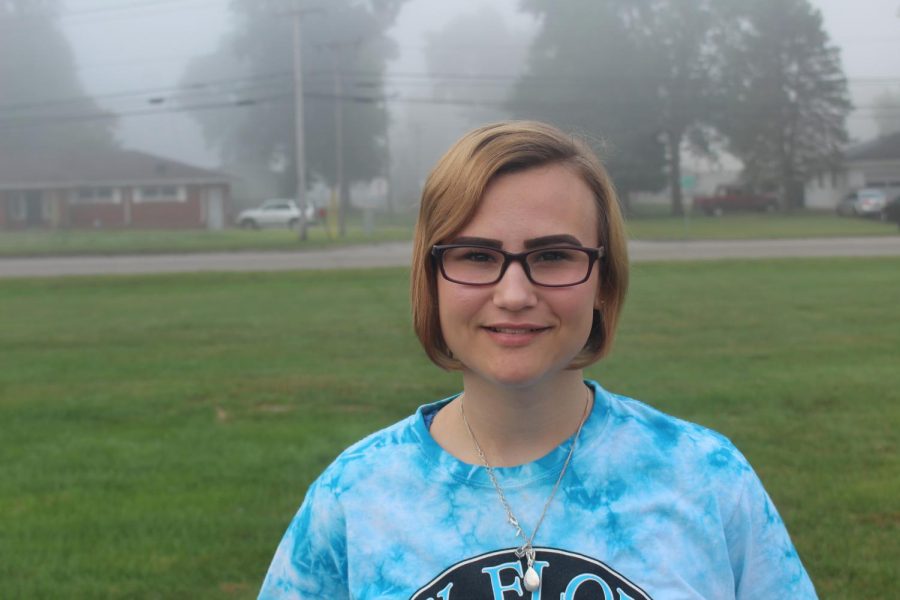The distorted depiction of mental health
Sophomore Lyn Jarrell is a staff writer for Elkhart Memorial GENESIS who specializes in opinion and column writing.
October 4, 2019
When you think of mental health, you’d naturally associate it with mental illness. Although that may be true, the depiction of mental illness itself is distorted.
Commonly, you’d categorize people with mental illness as “crazy” or “insane,” but that couldn’t be more wrong.
You see, mental illness has been so wrongly talked about for generations, and because of that, society is brought up to believe in the stereotypical views associated with it.
We have been accustomed to believing in the assumption that a person with mental illness is someone who is “off their rocker” and belongs in the “looney-bin.”
Mental illness has been a taboo subject for too long. But it’s not just the common population that continues to pass on this distorted belief.
People in higher statuses, such as celebrities and political figures, have also been passing on the belief, as well.
The way mental illness is talked about it is made to seem as though a person with a mental illness is incapable of everyday living.
The mental health general outlook depicts people with mental illness as being incompetent of anything. That they are unable to be a part of regular society, or that they are not as important as “normal” people.
For example, Donald Trump has spoken of mental illness in dark ways.
Not only has he blamed all the mass shootings on people with mental illness, he also called people with mental illness “monsters,” while talking about the mass shootings, in early August.
In fact, he has been talking about how “institutions” need to be reopened for those with mental illness.
I’m not one to just randomly disagree with the president, but he has made it hard to compromise.
As a person with mental illness(es) myself, the idea of “re-institutionalizing” people with mental illness is disgusting and absurd.
Not only is the idea of it completely irrational, but the fact that he had the audacity to even suggest such a thing is completely disheartening.
With the horrid history linked to mental institutions, you’d think that someone of such high power, would show a lot more respect and compassion to those like me, who are suffering.
I admit, there is a wide variety of mental illness, and there are mental illnesses that do make some people the literal definition of “crazy” or “insane,” but that doesn’t mean that people should be locked up and horrendously confined.
Suggesting that institutions be reinstated is opening old wounds. With new, modern resources, you’d think that there would be better options these days.
We’ve learned more and more about mental illness, and we’ve got the technology to help a lot of people with it.
We don’t need mental institutions. We need caregiving places. We need support and health centers.
We need compassionate people to help take care of those who are diagnosed with mental illness(es), and the people who are literally, the definition, incompetent.
The false depiction of mental illness has caused a number of setbacks. With people being afraid to reach out or open up about their mental illness, and people that verbally abuse, and sometimes physically abuse those with mental illness, society needs to start depicting mental illness for what it truly is.
It truly is something that cannot be fixed. It is something that can be both beautiful and disastrous: beautiful in a sense that a lot of creativity flows from those who are dealing with mental illness(es).
Think back to most old artists, such as Vincent Van-Gogh, or Edvard Munch.
Their works are absolutely stunning, but I could argue that they wouldn’t have created such works if it weren’t for their mental illness(es); if it weren’t for their pain.
For example, experts say that Edvard Munch suffered from anxiety, bipolar disorder, psychosis, and a few others.
Munch wrote in one of his personal journals that, “My fear of life is necessary to me, as is my illness. Without anxiety and illness, I am a ship without a rudder. My art is grounded in reflections over being different from others. My sufferings are part of my self and my art. They are indistinguishable from me, and their destruction would destroy my art. I want to keep those sufferings.”
But disastrous in a sense that there are many types of mental illness(es), and some do make a person ‘insane’ or ‘crazy’ or ‘incompetent,’ and sometimes, people with mental illness(es) that make them fit those stereotypes, can cause violence or can commit acts that can hurt others.
But that doesn’t mean that everyone with a mental illness are exactly the same. Mental illness can be genetically passed down, or just developed due to chemical imbalances within a person’s brain.
You don’t get to choose if you have mental illness(es) or not. It isn’t something you can just fix. Medications and therapy sessions are extremely helpful, but it’s something that cannot be cured.
Having mental illness does not make a person broken. It does not make them any less important or less valuable than those who don’t have mental illness(es).
A person can have more than one mental illness, but that doesn’t make them any less worthy. We the people, with mental illness(es) are not “monsters.”
We’re just unique and wired differently. But we have so much to offer to the world. We have so much potential. However, we will never get the chance to shine if the distorted depiction of mental illness(es) continues.
The views in this column do not necessarily reflect the views of the GENESIS staff. Email Lyn Jarrell at [email protected].









Mrs Presswood • Oct 4, 2019 at 9:12 am
What a GREAT article!!! Very well written! So proud of you!